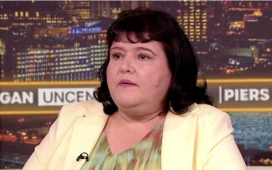Economists love people getting busy – and not just at work. Population growth is one of the three keystones of economic growth. According to some, demography is (economic) destiny.
Women are doing more than their fair share of nurturing a growing a population. In 2020-21 women accounted for nearly 90% of primary parental leave. Yet 91% of organisations do not discriminate between men and women taking parental leave.
You’d think the economy would give them recognition for this service. Alas, that’s not the case. Motherhood means, for most, a hit to pay and progression. Australian women with one child earn 5% less than those with no child. If you have two or more children, the wage penalty rises to 9%. In the US and UK the numbers vary but the story is the same.
This persists in retirement. At last count, the median Australian 65- to 74-year-old-woman had a superannuation balance of $200,000 – 20% less than men of the same age. The gap is likely to be larger for mothers, who have the double whammy of no superannuation contributions while on maternity leave and smaller contributions (blame that wage penalty) on their return.
The injury isn’t just financial. About 15% of mothers report experiencing discrimination in relation to performance assessments and career advancement while on or requesting parental leave.
On the flipside, men seem to get moderate pay bumps along with fist bumps when they become parents. Estimates range between no impact on their pay and a 2% increase.
So, let’s get this straight. Women are 2.5 times more likely to take parental leave than men. Yet there’s a wage premium for being a dad and a wage penalty for being a mum. It doesn’t seem to stack up. Why aren’t new dads more likely to take time off?
Some of the reasons are pragmatic. Breastfeeding is difficult (though not impossible) for men. Mums need time to recover from childbirth. It follows that women need to take leave after giving birth. If there’s a choice between maternity and paternity leave for a newborn, maternity leave is prioritised.
Others reasons are societal. Mothers are often expected to take time off. Whether a woman is taking too much leave or not enough seems to be a popular water cooler conversation. Fathers – not so much. Patriarchal views still argue that men should be breadwinners, not caregivers. The same views argue that men who spend time with their families are less committed to their work.
What really gets me, though, are the financial reasons.
Birth mothers of newborn children in Australia are entitled by law to up to 18 weeks of paid leave. Birth fathers? Just two weeks of paid leave. Here we have a law which explicitly discriminates against men on the basis of biological sex.
In doing so, the law entrenches old social gender roles and expectations. It also has negative impacts across the board. Paternity leave brings a range of benefits – and not just to dads. Kids report feeling closer to fathers who took paternity leave – even years later. Where couples are married, dad taking paternity leave means a lower probability of divorce. There’s a more equal sharing of household tasks, even years after paternity leave has ended.
Yes, providing paid paternity leave would involve some cost to taxpayers. But it would also provide an economic boost. It could be the thing which encourages our next baby boom – and our ticket out of a recession.
Normally, an increased fertility rate is economic short-term pain (lower participation rates) for long-term gain (bigger population). Equal paid parental leave could provide the latter while mitigating the former.
Perhaps counterintuitively, having paid paternity leave could actually increase the number of hours couples are willing to work while they have young children. Paid paternity leave encourages mothers to go back to work earlier. What’s more, couples who share household tasks more evenly are willing to spend more time on paid work.
It also incentivises people to become parents. At a time when population growth seems as elusive as economic growth, this is a pretty good deal. Globally, each woman is having fewer children than ever in recorded history. By 2100, the global population will have plateaued, or even begun to decline. Good for the environment, but not great for economic growth (if GDP was all we cared about).
I’m far from the first person to advocate for this. The Workplace Gender Equality Agency has long argued for universal, gender-neutral paid parental leave. More than half of Australia’s largest employers already offer gender-neutral paid parental leave on top of government entitlements. Other countries provide equal paid parental leave for fathers. It’s good for women and men both. With the economic sweetener thrown in, it seems like a no-brainer.














